Morbius: A Complex Anti-Hero in Marvel's Lore
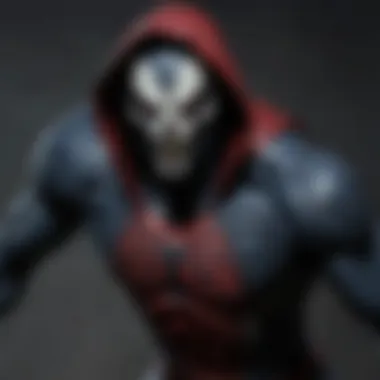

Intro
Morbius stands as one of the most intricate anti-heroes in the Marvel Universe, intertwined deeply with the narratives of Spider-Man. His character offers a unique blend of tragedy and moral complexity. First introduced in The Amazing Spider-Man #101 in 1971, Morbius was created by Roy Thomas and Gil Kane. He emerged not as a typical villain but as a character shaped by scientific experimentation gone awry. This article aims to dissect the nuances of Morbius, exploring his origins, evolution, and his significant interactions within the broader Spider-Man universe.
In an era when comic book narratives began to explore darker themes, Morbius epitomized the struggle between the monstrous and the human. His storyline provides fertile ground for discussion about identity, morality, and the constant battle against personal demons. By analyzing Morbius's connections with Spider-Man and the larger Marvel framework, readers can gain a clearer picture of how this character contributes to ongoing themes of heroism and villainy.
Spider-Man Character Analysis
Background
Spider-Man, created by Stan Lee and Steve Ditko, made his debut in Amazing Fantasy #15 in 1962. Peter Parker, the young man behind the mask, quickly became a relatable figure due to his struggles with personal issues and societal responsibilities. Over the years, Spider-Man's character has evolved significantly, grappling with loss, resilience, and the burden of power. This evolution has allowed Spider-Man to remain relevant, serving as a crucial counterpart to characters like Morbius.
Powers and Abilities
Spider-Man possesses a range of abilities that set him apart in the superhero landscape. He has superhuman strength, agility, and reflexes, alongside his iconic spider-sense, which alerts him to danger. His web-shooters enable him to swing across cities, making him a symbol of urban heroism. This unique combination allows Spider-Man to counter threats with adaptability and strategic thinking.
Character Development
Spider-Man's journey is marked by significant moments that shape his identity and responsibilities. Key events, such as the loss of Uncle Ben and his encounters with formidable foes, highlight his growth as a hero. The depth of his interactions with characters like Morbius further illustrates his complexity. While he often faces villains, Morbius offers a perspective of a character caught in a web of circumstance, reflecting the moral ambiguity that permeates the Marvel Universe.
Morbius's Significance
Michael Morbius, aka Morbius, the Living Vampire, represents an intriguing counterpoint to Spider-Man. Born with a rare blood disease, Morbius seeks treatment through an experimental procedure that transforms him into a creature that straddles the line between vampire and human. This transformation symbolizes his ongoing battle with identity and morality. While he often finds himself at odds with Spider-Man, their encounters reveal deeper themes, including the nature of monstrosity and redemption.
"Morbius symbolizes the struggle of an individual striving for redemption while being consumed by the very nature he seeks to overcome."
Morbius's character invites discussion on anti-hero tropes in the Marvel Universe. His alignment is ambiguous, oscillating between villainy and heroism, ultimately challenging traditional categorizations. This adds layers to his interaction with Spider-Man, as the latter must navigate this moral landscape while maintaining his values.
Culmination
Foreword to Morbius
Origin of the Character
Morbius, also known as Michael Morbius, was born in Greece, showcasing his origins as a deeply flawed individual. His early life was marked by challenges, including a rare blood condition. This ailment drove him to seek a cure through unconventional means. Morbius's origin story illustrates the tragedy of a man who transforms into a creature he never intended to be, highlighting the facade of heroism that can emerge from desperation. This theme of transformation is central to his character's development and serves as a cautionary tale of the impacts of human ambition.
Creation and First Appearance
Created by writer Roy Thomas and artist Gil Kane, Morbius first appeared in "The Amazing Spider-Man" issue 101 in 1971. His initial portrayal was that of a villain, but the depth of his character allowed for future reinterpretation as an anti-hero. This early appearance laid the groundwork for Morbius's complex narrative. The intricate designs and storytelling captured the interest of readers, and soon, his character evolved beyond a mere antagonist to Spider-Man. His psychological and physical struggles resonated with audiences, establishing him as a character with potential for growth and redemption.
Character Development
Character development plays a crucial role in understanding Morbius within the Marvel Universe. It highlights how this complex character transitions from his original portrayal to a figure full of moral ambiguities and personal conflicts. This evolution offers insights into thematic elements such as identity and redemption, making it possible to explore Morbius beyond mere superhero tropes. The developments reveal not only the nuances of his character but also how he interacts with other characters, especially Spider-Man. It establishes a framework for examining the layers of conflict and cooperation that define his relationships.
Transformation into Morbius
Dr. Michael Morbius was once a celebrated biochemist, recognized for his work in scientific research. However, his desperation to cure his rare blood disease led him to experiment with a serum derived from vampire bats. An accident during this process resulted in his transformation into a living vampire, giving him superhuman abilities but also a thirst for human blood. This transformation illustrates a profound shift in his identity, marking the beginning of Morbius's struggle between his human past and his new vampiric urges.
As Morbius embraces his new existence, the narrative explores the psychological trauma accompanying his transformation. He often grapples with guilt for his actions, as he is torn between his desire to help others and the violent impulses that threaten to overpower him. This internal conflict is central to his character development, making him a figure that embodies both the hero and the villain. The transformation serves as a metaphor for humanity's struggle with its dark side, revealing deeper truths about isolation and the desire for acceptance.
Evolution Over Decades
Over the decades, Morbius has undergone significant evolution in his character portrayal. Initially introduced as an antagonist to Spider-Man, he later gained traction as an anti-hero. His ongoing narrative showcases the complexities of his character, shifting from the simple premise of a vampire villain to a more rounded figure battling his inner demons. The writers took advantage of his rich backstory, allowing for exploration of themes such as redemption and the search for identity.
Morbius has appeared in multiple comic book series, adapting to the changing landscape of the Marvel Universe. With each new storyline, there is a nuanced understanding of his character's challenges, motivations, and goals. For instance, in the recent comics, his pursuit of a cure for his condition reflects his continuous quest for redemption, illustrating how he seeks to reclaim his humanity. This layered character evolution grants readers a deeper emotional connection, ensuring that Morbius is more than just a horror trope within comic lore.
Overall, the evolution of Morbius over decades showcases a character who reflects societal anxieties, moral questions, and the idea that one's past does not entirely define one's future. His ongoing journey emphasizes the potential for change, ultimately making Morbius a compelling subject in discussions surrounding anti-heroes and their relevance in modern narratives.
Morbius as an Anti-Hero
Morbius, the Living Vampire, occupies a unique space within the Marvel Universe as an anti-hero. This distinction is vital, not only in understanding his character but also in grasping the nuances of narratives within which he operates. Unlike traditional heroes, Morbius does not strictly adhere to moral absolutes. Instead, his journey challenges the black-and-white delineation typically seen in superhero tales.
The importance of Morbius as an anti-hero lies in his ability to embody moral ambiguity and complexity. This allows for richer storytelling. His character forces readers and viewers to grapple with themes of right and wrong in a more nuanced manner. In a cultural landscape that often idealizes clear-cut heroism, Morbius provides a refreshing counterpoint. By showcasing his internal struggles, the narrative invites a deeper analysis of what it means to be good or evil.
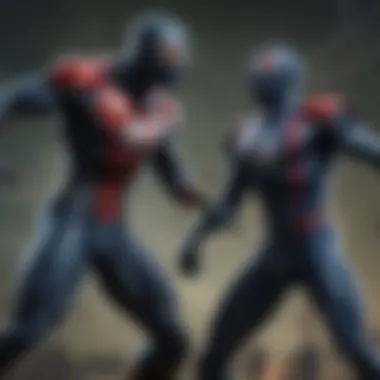
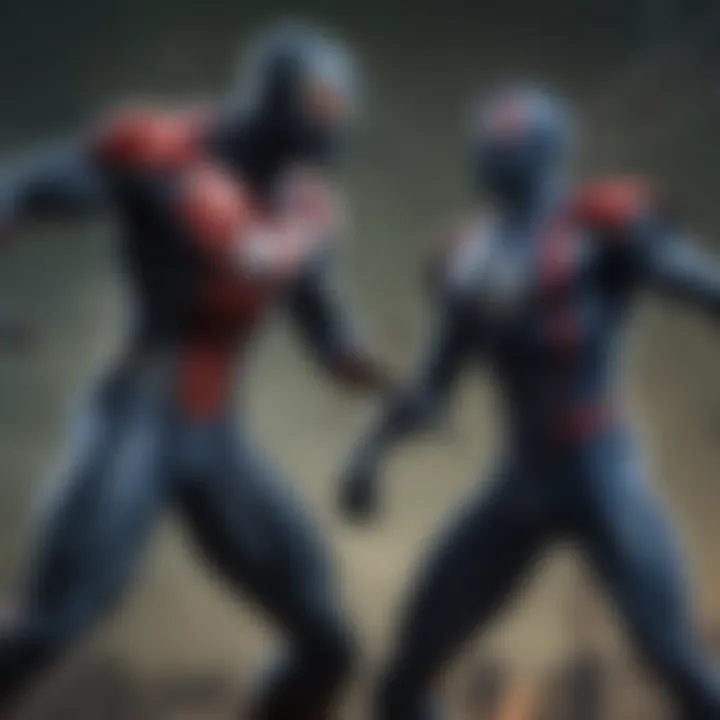
Another aspect to consider is how Morbius contrasts with traditional villains. Many villains in the Marvel Universe are driven primarily by ambition, greed, or vengeance. Morbius, however, often grapples with guilt and the desire for redemption. This struggle serves to deepen the audience's connection to his character, even as they may not agree with his actions.
“Morbius's story is not about a thirst for power but rather a longing for humanity.”
Moral Ambiguity and Complexity
Moral ambiguity defines Morbius's character. His transformation into a living vampire is a result of an experiment gone wrong, aimed at curing his rare blood disease. This background sets the stage for his internal conflict. He possesses vampiric abilities, yet his intent is typically benign. This duality presents a compelling portrayal of a character grappling with his new identity. While his thirst for blood aligns him with traditional vampire folklore, Morbius often seeks out alternative sources to satisfy this need, indicating his rejection of purely villainous behavior.
Fans of Morbius may appreciate how this complexity mirrors real-life struggles. It raises questions about addiction, morality, and the consequences of one's actions. Characters like Morbius resonate with an audience that has seen or experienced life's gray areas. Moreover, his complex nature mirrors societal views about people who navigate difficult moral waters. This aligns with contemporary discourse around mental health and the human experience.
Contrast with Traditional Villains
In contrast to more conventional villains in the Marvel Universe, Morbius is less driven by malevolence. Characters like Green Goblin or Venom often embody outright malice and chaos. Morbius, instead, often seeks harmony between his human life and his limitations as a vampire. This sets him apart, establishing him as a tragic figure rather than a straightforward antagonist.
Morbius interacts with heroes and villains alike, but his relationships are often characterized by conflict stemming from misunderstanding rather than evil intent. For instance, his clashes with Spider-Man often emerge from a desire for acceptance and control over his fate rather than a desire to dominate or destroy.
Furthermore, his pursuit of redemption is a notable aspect that traditional villains rarely explore. The audience sees a character who is not just a product of his circumstances but one actively engaged in seeking solutions to his problems. This quest for redemption makes him relatable, as he reflects the human capacity for growth and change, despite the odds stacked against him.
Relationship with Spider-Man
Understanding the relationship between Morbius and Spider-Man is crucial for appreciating the depth of both characters within the Marvel Universe. Their interactions dramatically showcase the themes of conflict, alliance, and moral complexity. This relationship provides insight into how two characters, often positioned on opposing sides of morality, can coexist in narratives that challenge the idea of good versus evil. Morbius, as an anti-hero, often mirrors Spider-Man's journey, allowing readers to explore themes of identity and redemption through their encounters.
First Encounters in Comic Books
Morbius's introduction to the Spider-Man storyline began in The Amazing Spider-Man #101 published in 1971. This issue presented Morbius as an antagonist, a tragic figure whose transformation into a vampire-like creature was born out of desperation and scientific ambition. In his initial encounter, he was depicted as a being driven by necessity, seeking to cure his disease rather than aiming for outright violence. This origin story created a character who was complex and relatable rather than simply villainous.
Their first encounter set the stage for numerous battles and alliances. Spider-Man's instinct to view Morbius as a threat is understandable. However, choosing to pursue a deeper understanding of Morbius's plight reveals Spider-Man's inherent moral compass. He sees Morbius not just as a monster but as someone who needs help.
In subsequent issues, Spider-Man found himself in several precarious situations involving Morbius, including needing to prevent Morbius from feeding on innocent people. They share a reluctant respect for each other, often demonstrating that circumstances, rather than sheer malice, often dictate their actions. The comic book narrative develops a rich tapestry of conflict where both characters must reconsider their roles in the larger moral landscape of the Marvel Universe.
Conflict and Cooperation
The relationship between Morbius and Spider-Man is often classified by a duality of conflict and cooperation. This duality becomes apparent in their ongoing encounters, which oscillate between adversarial actions and unexpected alliances. Initially, their meetings are marked by violence. Spider-Man sees Morbius as an unnatural threat, a creature that must be contained. Morbius, on the other hand, often views Spider-Man as a moralistic obstacle.
Yet, crises sometimes force them to work together. For example, in various story arcs, they faced greater threats that required collaboration. In these moments, Morbius’s knowledge of science and Spider-Man’s intelligence complement each other, leading to solutions that neither could achieve alone. This cooperative dynamic adds depth to their relationship, illustrating that their fates are inexplicably linked.
"Even in conflict, Morbius reflects Spider-Man’s struggle with the darker aspects of his own identity. Their narrative becomes a dialogue on what it means to be human."
Through these alliances, Morbius challenges the perception of enemies in the superhero landscape and exemplifies how circumstances redefine morality. Their evolving relationship underscores a profound narrative of trust, highlighting how anti-heroes can serve as essential players in the battle against more significant evils.
In summary, the relationship between Morbius and Spider-Man is rich with layers. It’s not merely a series of fights; it’s a complex discussion of morality, identity, and redemption within the wider context of the Marvel Universe.
Morbius's Place in the Marvel Universe
Morbius, the Living Vampire, holds a unique position within the Marvel Universe due to his complex nature and intricate relationships with both heroes and villains. His character embodies a blend of anti-hero and tragic figure, which enables him to traverse various narratives while maintaining a distinct identity. Understanding Morbius's place in the Marvel Universe provides insights into the themes of morality, humanity, and the struggle for redemption.
Crossovers with Other Characters
Morbius's interaction with prominent Marvel characters highlights his multifaceted nature. His crossovers often explore moral dilemmas, showing both his darker side and moments of heroism.
- Spider-Man: This character is perhaps the most significant figure in Morbius's narrative. Their encounters often lead to philosophical debates on the nature of good and evil. Morbius sees himself as a misunderstood creature, while Spider-Man operates within a strict moral framework.
- Blade: Another pivotal connection is with Blade, the vampire hunter. This dynamic represents the classic antagonist versus anti-hero trope. Blade's mission to eradicate vampires contrasts sharply with Morbius's struggle to control his urges. Their interactions frequently raise questions about identity and what it means to be a monster.
- The Midnight Sons: Morbius's association with this group further cements his role in the darker corners of the Marvel Universe. He collaborates with supernatural beings, navigating threats that challenge traditional superhero narratives.
These crossovers not only enrich Morbius's story but also enhance the arcs of other characters.
Significance in the Spider-Verse
Morbius's significance in the Spider-Verse extends beyond his role as a character. He embodies themes relevant to the larger narrative arcs within this universe.
- Connection to Horror: Morbius introduces a horror element into the Spider-Verse. His origins and transformation create an atmosphere that complements narratives involving darker villains. This aspect allows for a richer exploration of fear and monstrosity.
- Mirrors Spider-Man's Struggles: As a character marked by tragedy, Morbius reflects Spider-Man's own conflicts. Both characters grapple with their identities and the dualities of heroism and monstrosity. Exploring this connection adds layers to their interactions.
- Expanding the Universe: Through Morbius, the Spider-Verse expands to include discussions on vampirism and its implications within superhero narratives. This adds depth to the mythos surrounding Spider-Man and emphasizes the genre's versatility.
In summary, Morbius's place in the Marvel Universe is significant for its depth and complexity. His crossovers with other characters enhance his narrative, while his role in the Spider-Verse broadens the exploration of essential themes, thus showcasing the interconnectedness of the Marvel mythos.
Media Adaptations
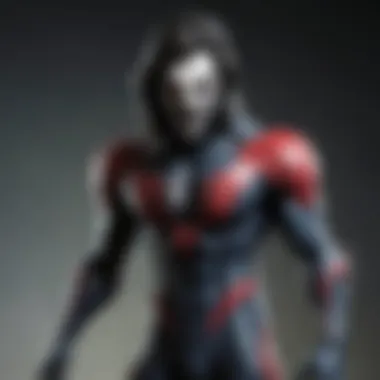
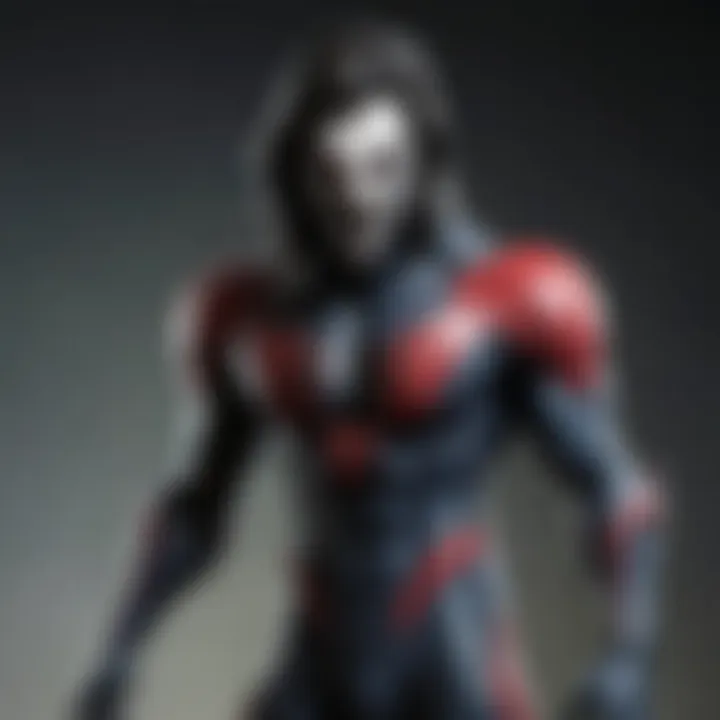
Media adaptations of Morbius play a significant role in shaping his character and expanding his reach beyond comic books. They serve as a bridge to new audiences, introducing complex themes from the comics while providing opportunities for reinterpretation. Through various mediums such as animated series and films, Morbius's character has evolved, reflecting contemporary interests and societal issues. These adaptations enrich the overall narrative of the Marvel Universe, affirming Morbius's status as both a compelling anti-hero and a symbol of moral ambiguity in modern storytelling.
Animated Series Representations
Morbius has appeared in multiple animated series, most notably in Spider-Man: The Animated Series (1994). This show introduced him as a tragic figure, emphasizing his internal conflict as a scientist transformed into a vampire-like being. His portrayal maintained key characteristics from the comics, such as his desire for redemption and struggle against his new nature. This representation was important because it provided a nuanced view of a character often seen merely as a villain.
In later adaptations, Morbius was featured in Ultimate Spider-Man, where he was recontextualized as a young scientist with complex motivations. This shift attracted younger audiences and highlighted themes of friendship and betrayal, showing that Morbius is not only defined by his affliction but also by his actions and choices. Overall, animated portrayals keep his character relevant and accessible to new generations.
Film Adaptations
The film adaptations of Morbius have generated significant buzz, particularly with the release of Morbius (2022), starring Jared Leto. This film sought to explore the deeper themes present in Morbius's story, such as the conflict between good and evil and the quest for personal redemption. While the film aimed to stay true to the source material, it evoked mixed reviews from critics and fans regarding its execution and character development.
In the cinematic landscape, Morbius's introduction to live-action film presents both opportunities and challenges. It crucially acts as a link within the expanding Spider-Verse, introducing characters and narratives from different corners of the Marvel Universe. The representation in films raises questions about the essence of Morbius as an anti-hero and presents the ongoing struggle of adapting comic book characters to fit new narratives. As a result, each iteration of Morbius in film not only shapes the character but also reflects audience perceptions of heroism and monstrosity.
"Film adaptations are vital as they shift the narrative landscape, offering new interpretations while still engaging the core themes of the character."
Through both animated series and films, Morbius continues to navigate through the complexities of identity, redemption, and morality, ensuring that his legacy within the Marvel Universe remains dynamic and relevant.
Themes in Morbius's Storylines
The exploration of themes in Morbius's storylines is crucial to understanding his character and impact in the Marvel Universe. His narratives go beyond mere good versus evil tropes, delving into complex layers of identity, morality, and the human experience. Perhaps what sets Morbius apart from other characters within this universe is the way his struggles reflect broader philosophical questions about existence, virtue, and the path to redemption.
Identity and Redemption
Morbius's journey is deeply intertwined with themes of identity and redemption. Initially introduced as a brilliant scientist, Michael Morbius becomes a victim of his own experiments, gaining vampiric abilities while losing his humanity. This transformation initiates an internal conflict: how does he define himself in a world that increasingly views him as a monster?
The tension arises from his desire for redemption. He grapples with the consequences of his actions, continuously seeking a cure for his condition while also using his abilities to fight against other threats. This conflict illustrates the classic struggle of an anti-hero caught between his darker impulses and a longing for goodness.
Additionally, Morbius's identity crisis highlights themes of societal perception and ostracization. He is often seen as a villain in the eyes of many, yet his motives stem from a desire to help others, core traits of a hero. This dichotomy enriches his narrative, making it a complex commentary on how individuals are judged based on outward appearances rather than their true intentions.
The Nature of Humanity
The nature of humanity is another compelling theme within Morbius's storylines. His character raises profound questions about what it means to be human. The duality of his existence as both a man and a vampire challenges conventional definitions of humanity. Does power corrupt? Does the loss of humanity lead to the loss of morality?
Morbius often acts as a vehicle for exploring these philosophical quandaries. In numerous arcs, he encounters characters that amplify his disconnection from human norms. How he navigates his relationships often underscores his desire to reconnect with his lost humanity.
Through his character, the narratives examine the struggle between primal instincts and rational thought. Morbius's story is less about the supernatural elements and more about his internal battles and his quest to retain a grip on his humanity in the face of overwhelming darkness.
The complexity of Morbius serves as a mirror reflecting our own struggles with identity, morality, and what it truly means to be human.
Through the lenses of identity and humanity, Morbius's narratives significantly contribute to the larger moral dialogues within the Marvel Universe. His tale is one of tragedy turned heroism, questioning the very essence of good and evil. In doing so, Morbius becomes not just a character, but a thought-provoking exploration of the self.
Fan Reception and Critique
Understanding fan reception and critique is essential to grasp the cultural significance of Morbius within the Marvel Universe. The character has generated diverse responses, both positive and negative, influencing perceptions among fans and creators alike. This reception shapes how Morbius is integrated into broader narratives and informs potential future appearances in various media. Exploring fan reactions provides context and appreciation for Morbius’s evolution as a character.
Critical Reviews of the Character
Critical reviews of Morbius often highlight his unique role as an anti-hero. Critics discuss his transformation from Dr. Michael Morbius to the living vampire, placing significant emphasis on his moral ambiguity. Reviewers mention that this complexity sets Morbius apart from traditional superheroes and villains. However, past comic series received criticism for inconsistent characterizations. Some argue that his portrayal lacks depth or becomes repetitive.
Various artistic interpretations also create a divide among enthusiasts, with some preferring noir-style visuals, while others favor more contemporary designs. The fluctuations in quality across different comic arcs have affected Morbius's popularity. Regardless, there remains a dedicated fan base that appreciates the themes of identity and redemption he embodies.
Popular Interpretations by Fans
Fans have developed a wide array of interpretations regarding Morbius's character, as seen through fan art, fan fiction, and online discussions. These interpretations often explore his struggles with morality and his quest for redemption. For example, many headcanons grapple with his vampiric nature, questioning what it means to be both a monster and a hero.
Some popular themes that emerge in fan interpretations include:
- Duality: Fans frequently explore the dual nature of Morbius—scientist versus monster. This duality often resonates in fan narratives that navigate his internal conflicts and ethical dilemmas.
- Romantic Interests: Various fan works delve into Morbius's relationships, often portraying him as a misunderstood romantic figure. These interpretations emphasize emotional depth and vulnerability.
- Comparative Analysis: Fans often compare Morbius to other anti-heroes, reflecting on shared struggles. This dialogue enriches community discussions, fostering debates about morality and motivations.
Overall, the way fans perceive and critique Morbius underscores the character's ongoing relevance in popular culture. Fans appreciate the complexity he brings to the narratives, contributing to a dynamic discourse around his legacy in the Marvel Universe.
"Morbius is not just a vampire. He represents the human struggle with darkness within oneself."
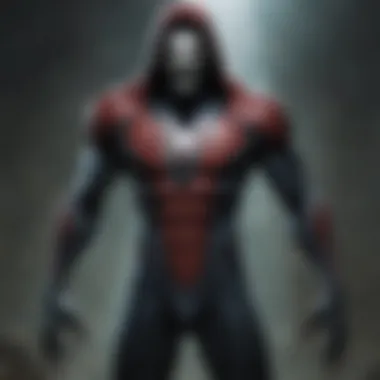
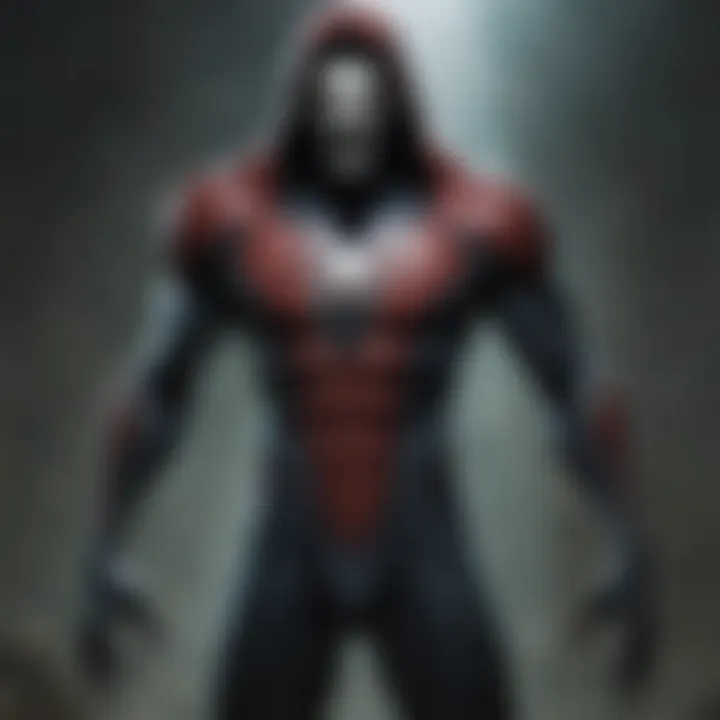
Such sentiments reflect a deep connection between fans and the character, showcasing his significance beyond sheer entertainment.
Morbius in Popular Culture
The figure of Morbius has made significant inroads into popular culture, transcending the confines of comic books and gaining recognition in various media formats. His unique character, rooted in themes of identity and the supernatural, resonates with many audiences. As Marvel's living vampire, he brings a distinctive layer to the narrative tapestry of superhero lore. This section examines how Morbius has influenced and been shaped by popular culture, focusing on two key elements: merchandising and collectibles, and his impact on the horror genre.
Merchandising and Collectibles
Morbius's image and story have inspired a wide range of merchandising opportunities that extend beyond comic books. Various collectibles have been produced, including action figures, graphic novels, and plush toys. These items not only serve as fan memorabilia but also reflect the rise of Morbius as a character who appeals to both long-time readers and newer fans.
Companies like Funko have included Morbius in their Pop! Vinyl figures series, which highlights his iconic look and design.
- Action Figures: Different iterations have been released over the years. Notable examples include those from Marvel Legends, capturing both his heroic and antagonistic traits.
- Graphic Novels: Reprints and collected editions are available, making it easy for fans to access his storyline.
- Clothing and Accessories: From t-shirts to backpacks, the character's branding has surfaced in mainstream clothing lines, showcasing the trend towards combining superhero themes with everyday fashion.
Morbius's merchandising reflects not just his cult status but also an ongoing interest in characters who operate in moral gray areas.
Impact on the Horror Genre
Morbius uniquely intersects with the horror genre, providing a darker side to Marvel's offerings. His character embodies fear and fascination, often drawing elements from traditional horror tropes. This blending allows Morbius to explore themes often reserved for horror literature and film.
As a vampire, Morbius aligns with classic horror characters, yet his internal struggle offers a refreshing take. Unlike typical monsters, he grapples with his humanity and choices. This distinction enriches narratives that involve him. His stories examine:
- The nature of evil: Morbius’s character challenges historical depictions of vampires, presenting them as capable of redemption.
- Mystique of transformation: His metamorphosis into a vampire parallels the horror motif of transformation and its psychological effects on individuals.
In recent adaptations, including animated series and films, Morbius has been tied to horror aesthetics, enhancing suspense and thrills. His characteristics allow narrative flexibility, enabling crossover with horror storytelling while maintaining ties to superhero lore.
Morbius serves as a vital link between the worlds of horror and superhero narratives, reflecting deeper societal themes and human conditions.
Through merchandising and his impactful role in horror, Morbius continues to evolve in popular culture. His presence not only demonstrates significant fandom but also opens discourse on complex themes that resonate with wider audiences.
Future Prospects for the Character
Considering the potential future of Morbius within the Marvel Universe is both fascinating and important. This section addresses his upcoming story arcs and planned film and television developments. Here, we explore the broader implications of these prospects for both fans and the character's evolution.
Focusing on Morbius's future provides insight into how the character may be reshaped, attracting new audiences and deepening his connections with existing narratives. These developments impact not only his individual story but also his connections with the wider Marvel Universe, especially with closely associated characters like Spider-Man.
Upcoming Story Arcs
Morbius's future in comic books hints at exciting story arcs that could redefine his role. Recent trends show a shift towards darker narratives, which suit Morbius's complex character. Future storylines may explore deeper themes of identity and humanity's duality. Some rumored arcs include:
- The Rise of New Villains: As Morbius faces new threats, these encounters could push him to reevaluate his own morals.
- Alliances with Other Anti-Heroes: It is likely that Morbius will team up with characters like Venom or even Wolverine to tackle shared enemies, emphasizing his anti-hero status.
- Exploration of His Past: A deep dive into Morbius's origins can provide more context, possibly showcasing the full extent of his internal conflict.
This anticipated direction allows writers to cleverly intertwine his character arc with prominent events in the Marvel Universe, keeping fans engaged and invested in his journey.
Potential Film and TV Developments
On the cinematic front, Morbius's recent film adaptations spark discussions about his role in future films and television series. With the trends in superhero storytelling, there is evident interest in expanding Morbius's presence.
Possible avenues for adaptation include:
- Expanded Universe Collaborations: Future films might integrate Morbius with other characters within the Spider-Man universe. The success of interconnected storylines can boost his profile significantly.
- Television Series Opportunities: There could be potential for Morbius-centric shows on platforms such as Disney+ or Hulu. A series could delve into character depth, allowing for more complicated narratives to unfold.
- Cross-Media Projects: Collaborations between animated series and live-action movies could present Morbius in varied styles, catering to both longtime fans and new viewers.
Epilogue
The character of Morbius holds significant weight in the Marvel Universe. His journey from a tragic anti-hero to a complicated figure within comic book lore illustrates themes that resonate throughout the franchise. This section encapsulates key facets of Morbius's impact and legacy, highlighting several crucial elements that warrant attention.
Summary of Morbius's Impact
Morbius's character not only expands the Spider-Man universe but also enhances moral complexity within superhero narratives. His unique blend of vampiric traits and scientific tragedy contributes to multifaceted storytelling. Unlike many villains, Morbius embodies a sense of tragedy and remorse. Readers often perceive him as a victim of his circumstances, which establishes a connection that many conventional villains lack.
In interactions with Spider-Man, Morbius often serves as a foil to the hero. Spider-Man, representing morality and hope, contrasts sharply with Morbius's struggles with his darker impulses. This dynamic raises questions about the nature of heroism and villainy, showcasing the fragile line that often separates the two. Moreover, his recurring appearances in various adaptations demonstrate his enduring relevance.
"Morbius serves as a bridge between the worlds of heroism and monstrosity, challenging our perceptions at every turn."
Final Thoughts on the Character's Legacy
Morbius's legacy is multifaceted, reflecting the evolution of comic book storytelling. He has transitioned from being merely a villain to a character embodying intricate themes of identity and redemption. His ability to garner sympathy allows the audience to explore the darker side of human nature, making him a relevant figure, even as trends in comic narratives evolve.
Looking ahead, Morbius's potential for further development in upcoming arcs or adaptations remains promising. His story has the capacity to delve deeper into the consequences of his condition, fostering important discussions around ethics in science and the encompassing quest for humanity. As Morbius continues to navigate his identity, he stands as a testament to the richness of storytelling within the Marvel Universe, reinforcing the idea that not all heroes or villains are easily defined.







